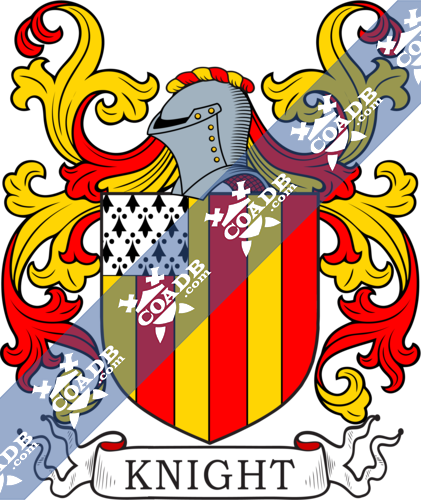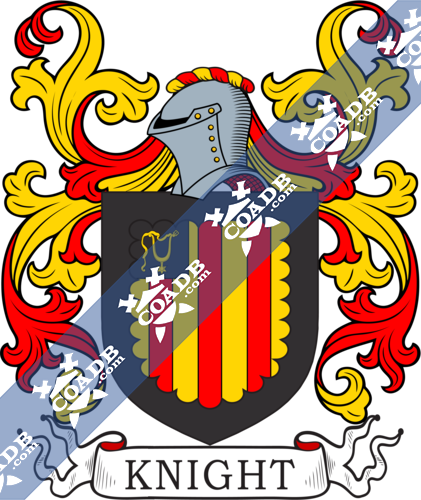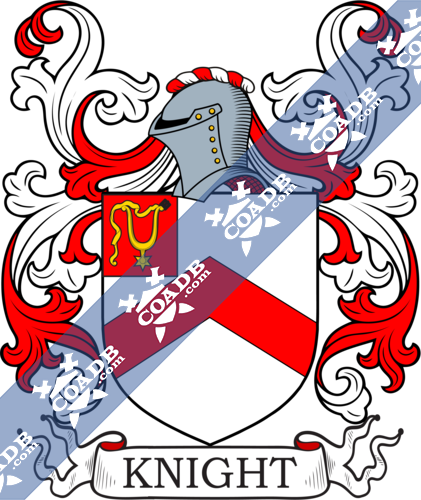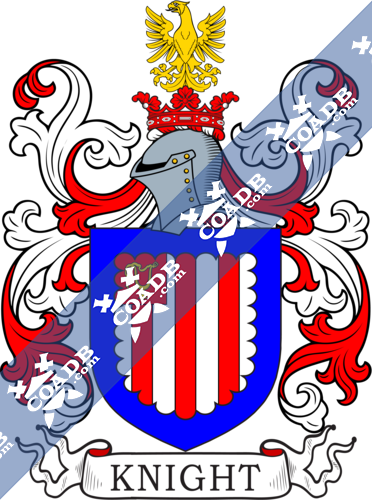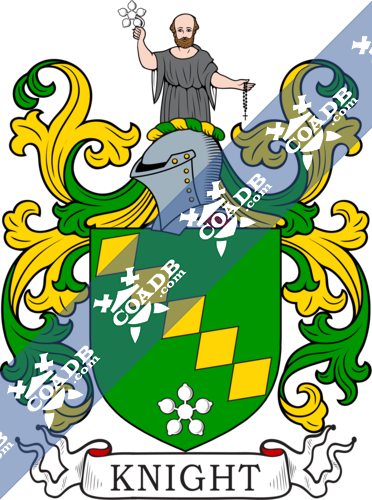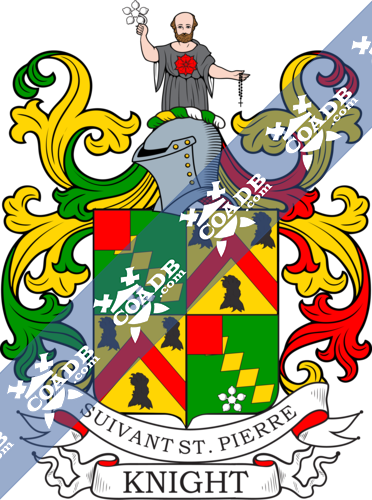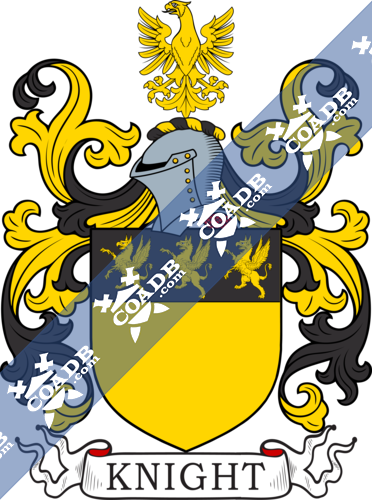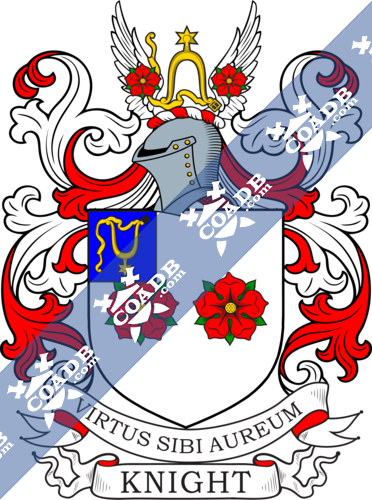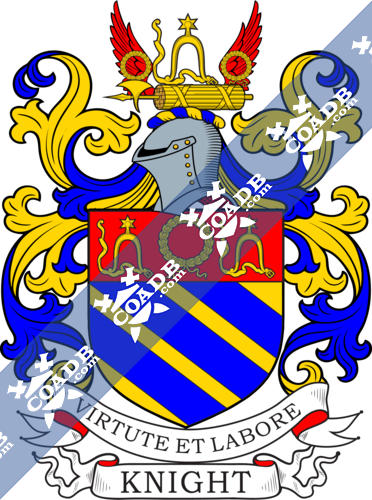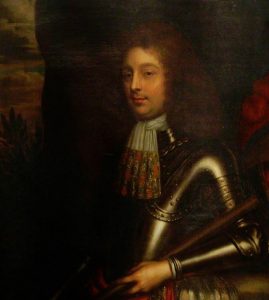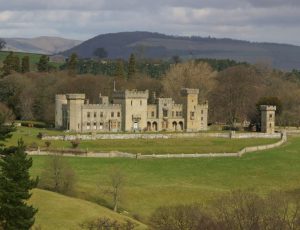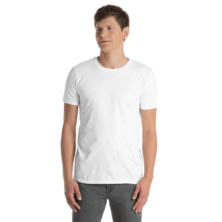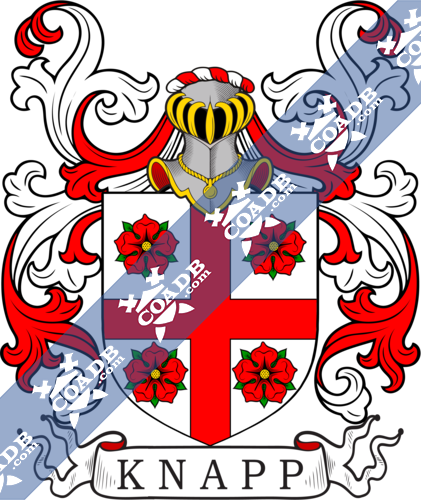Knight Family Crest, Coat of Arms and Name History
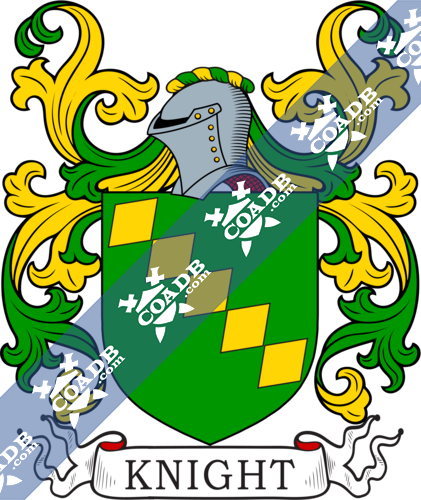
Knight Coat of Arms Gallery
Don’t know which Coat of Arms is yours?
We can do a genealogical research. Find out the exact history of your family!
Learn MoreKnight Surname Name Meaning, Origin, History, & Etymology
This is a last name from official origin from “the knight”, a man-at-arms, a military follower, or chivalrous soldier. It can also be an occupational name for a servant. In the feudal system present in medieval times or the Middle Ages in Europe (Holy Roman Empire and Christendom), a knight was a military servant of the king, who owned land in exchange for military service rendered to the king. In the feudal hierarchy of the British Isles and Europe, a knight was ranked just below a Baron.
Because knights were often mounted on horses, the name came to denote a man of substance, since maintaining horses and armor was expensive. As monetary payment replaced feudal obligations, the term knight lost its original meaning and came to denote a man on noble or aristocratic birth, from a distinguished family, who served the king. The book Dictionary of American Family Names states “The surname is more likely to have been applied to a servant in a knightly house or to someone who had played the part of a knight in a pageant or won the title in some contest of skill”. It derives from the Anglo-Saxon cniht, a servant. The Anglo-Saxon word does not imply the modern idea of knighthood, but rather refers to the period in a man’s life between his childhood and manhood. The name was also applied to people who did not possess knighthood, being applied as a sobriquet or nickname. William Arthur’s 1857 book An Eytmological Dictionary of Family and Christian Names states the following in regard to this surname: “A term originally applied to a young man after he was admitted to the privilege of bearing arms, by a certain ceremony of great importance called knighting, which was generally conferred by the king”. The Middle English words were knyht, kniht, and knyght. The name was used a personal (first) name before the Norman Conquest of 1066 AD.
This surname has over 50 different coats of arms. One of the oldest was granted to Thomas Knight of Hol, Northampton, England in 1546, blazoned as follows in heraldry: Ar. on a fesse between three bulls’ heads erased sable armed and ringed at the nose or, a fret between two doves of the field. Crest—A dexter arm embowed, vested bendy wavy sinister of four or and gules supporting with the hand a sword in pale, the point resting on the wreath, the pommel surmounting a pair of spurs all proper. It is the 12th arms depicted at the top of this web page.
The Knight family owned considerable property in England during the Middle Ages. Lewis Samuel’s book, A Topographical Dictionary of England, states the following in regard to this surname: Norton-Burnt House, so called from the greater portion of it having been destroyed by fire while the seat of Sir William Knight, Baronet, is the property of the Earl of Harrowby” and, of another branch of the Knight family tree in West Riding Yorkshire, states “The family seat of the Knights, here, an ancient house, was taken down by the late Mr. Gally Knight when he removed his residence, a few years since, to the mansion at Firbeck; but the offices, with the gardens and pleasure-grounds, in the latter of which, is an extensive lake, are still remaining”.
Spelling Variations
Some spelling variants or names with similar etymologies include Knyght, Knit, Knicht, Knict, Kneytm Knigt, Kniht, Knyth, Knit, Night, MacKnight (Scottish), Knightt, Knighty, Knighte, Mac an Ridire (Irish)and 50 others.
Popularity & Geographic Distribution
The last name Knight ranks 199th in popularity in the United Status as of the 2000 Census. The name ranks particularly high in the following four states: Alabama, South Carolina, Mississippi, and Maine. The surname Knight frequency/commonness ranks as follows in the British Isles: England (86th), Scotland (319th), Wales (123rd), Ireland (1,108th) and Northern Ireland (823rd). In England, it ranks highest in counties Sussex and Hampshire. In Scotland, the surname ranks highest in Orkney and Moray. In Wales, it ranks highest in Monmouthshire. In Ireland, it ranks highest in county Kildare. In Northern Ireland, it ranks highest in Fermanagh. The 1890 book Homes of Family Names by H.B. Guppy, states the following in regard to this surname: “Well distributed over England south of a line drawn from the Humber to the Dee. In the northern part of England it is singularly rare. Sussex stands foremost for the number of its Knights, and after it come, in their order, Hants, Leicestershire and Rutland, and Gloucestershire. In Norfolk and Suffolk we have the form of Knights”. The name is also present throughout the remainder English speaking world: Canada (361st), New Zealand (141st), Australia (108th), and South Africa (676th).
Early Bearers of the Surname
One of the earliest known bearers of this last name was Godefridus Niht who was recorded in the Norfolk Pipe Rolls of 1166 AD. Walter le Knigt was documented in Oxfordshire, England in 1200 AD, William Knight was recorded in Worcestershire, England in 1221 AD, and John Knygth was recorded in Suffolk in 1275 AD. Roger le Knyt was recorded in the Close Roll in 1272 AD. The Hundred Rolls of 1273 AD, a census of Wales and England, known in Latin as Rotuli Hundredorum lists four bearers of this surname: John le Cnitht (Suffolk), Gilbert le Knyt (Cambridge), Roger le Knuth (Oxfordshire), and Ellis le Knyght (Wiltshire). In Scotland, Robert dictus Knycht, burgess of Abirbrothoc, had a charter of a piece of land in Aberbrothoc in 1331 AD. The Poll Tax of Yorkshire in 1379 AD lists four bearer of this last name: Johannes Knyght, Willelmus Kneyte, Thomas Knycht, and Willelmus Knygth. In Scotland, in 1435 AD John Knycht, canon of Brechin, was rector of Funew An early marriage involving this surname was Jone Knight to Thomas Burves at St. Antholin (London) in 1599 AD. An early baptism involving this surname was John, son of Know-God Knight, St. James Clerkenwell.
Knight Family Tree & Knight Genealogy
The following is a discussion of four different noble, royal, landed, or aristocratic families bearing this last name.
Knight of Glen Parva
The Knight family tree begins with a mention of Thomas Knight, of Bath, and of Weston, near Bath, England who married Elizabeth Buttrye in 1591, having issue with her. The eldest son of this marriage was Richard Knight, who in turn had a son named Samuel. This Samuel Knight was born in 1686 and in 1714, he married Judith, daughter of Thomas Voughton of Tamworth and his wife Isabel, and they had the following children together: Joseph (born 1715, in 1737, married Katharine Rhys and had issue named Joseph who married daughter of John Rogers, Ann who married Samuel Knight of Edmonton, and Katherine) Henry (born 1723, married Anne and had issue named Henry), and William (of Tamworth, born 1732, married Mary Thorpe of Leicester, had issue named Samuel, who in turn had issue named Joseph of Glen Parva and Betsey, the later marrying John Walker Good of Rothley Grange in 1833, having issue with him). The first son of the marriage, Joseph Knight, was an Esquire of Manir House, Glen Parva, county Leicester, Justice of the Peace, Deputy Lieutenant, and Colonel of H.M 26th Regiment of Militia, born in February 1803. In 1830, he married Mary, daughter of John Gregory of Aylestone Hall, county Leicester, and had two daughters and two sons with her as follows: Mary Ada, Ida Anne, Gregory (Captain 26th Regiment of Militia, married Eva Caroline Morgan of North Wales, had issue named Morgan Gregory in 1877 and Avice Mary Gregory in 1876), and Joseph Guy (Captain of the 26th Leicestershire Militia). The Knight Coat of Arms (erroneously called the Knight Family Crest or Knight Family Shield by those unfamiliar with heraldry and genealogy) is blazoned in heraldry as follows: Paly argent and gules, within a bordure engrailed sable on a canton of the first, a spur or. Crest: Between two wings a spur or, rowel downwards, leathered and buckled. They resided at The Manor House, Glen Parva, near Leicester, East Midlands, England, Great Britain or the modern day United Kingdom of the British Isles of Europe.
Knight of Chawton
The lineage or ancestry of this family begins with one William Knight, of Chawton, who lived in the middle of the 1500s AD. His great-grandson was Nicholas Knight. This Nicholas married a woman named Elizabeth and had three sons with her. The youngest son of said marriage was Stephen Knight, Esquire of Chawton. He died in 1628, leaving issue with his with Judith as follows: Richard and Dorothy, the later who married Richard Martin of Ensham, county Oxford. This son Richard was an Esquire of Chawton, who married Elizabeth, daughter of Fielder of Barrow Courts, Berkshire, England, and was succeeded by his son upon his death in 1642. This son was Sir Richard Knight, who married Priscilla, daughter of Sir Robert Reynolds of Elvetham, but died without posterity in 1679, where upon the estates devolved to his relative, Richard Martin. This Richard Martin was an Esquire and gentleman who then assumed the surname was Knight. He in turn died in 1687 without posterity and was succeeded by his brother Christopher Martin, who also assumed the surname. He in turn died in 1702 without posterity, and he bequeathed his estates to his sister, Elizabeth Knight. This Elizabeth married, William Woodward, son of Edward Woodward of Fosters. She secondly married Bulstrode Peachey. She passed away in 1737 without posterity and the estates went to Thomas Broadnax of Godmersham, who assumed the surname of May. In 1729, he rebuilt the mansion of Godmersham. He changed his surname to Knight in 1738. In 1729, he married Jane, daughter and co-heir of William Monk of Buckinghamshire, and had several issue with her. He died in 1781 and was succeeded by his eldest son Thomas. This Thomas Knight was an Esquire of Chawtown and Godmersham who was born in 1735. He married Catherine, daughter of Dr. Wadham Knatchbull, Dean of Canterbury, but died in 1794 without posterity, whereupon his lands went to his cousin Edward. This Edward Austin was an Esquire who changed his last name to Knight, and became of Godmersham. In 1791, he married Elizabeth, daughter of Sir Brook Bridges, with whom he had the following issue: Edward (discussed below), George Thomas (married Hilare, Countess Nelson, in 1837), Henry (Major in the Army who married Sophia, daughter and co-heir of Lews Case, had son named Lewis Edward, and he secondly married, in 1836, Charlotte, daughter of Reverend Edward Northey, Canon of Window, and had a daughter with her named Charlotte), Reverend William (of Steventon, Hants, England, who first married Carline Portal of Freeholk House and had three daughters and four sons with her, and he later married Mary, daughter of Reverend Edward Northey, with whom he had three daughters, and thirdly married Jane Hester), Charles Briggs, Brook John (married Margaret Pearson), Fanny Catherine (married Sir Edward Knatchbull, Baronet, and Member of Parliament), Marianna, Cassandra Jane (married Lord George Augustus Hill), and Louisa (married Lord George Augustus Hill). He died in 1852. His son Edward Knight was an Esquire of Chawton House, county Hants, England, and of Godmersham Park, county Kent, England, Justice of the Peace, Deputy Lieutenant, and High Sheriff who was born in 1794. In 1826, he married his first wife: Mary Dorothea, daughter of the Right and Honorable Sir Edward Knatchbull, Baronet, and had seven children with her: Edward Lewkenor (1826), Wyndham William (of Billing House, Ashford, Kent, Lieutenant of the Rifle Brigade and Captain of the Royal East Kent Mounted Rifles, born in 1828, married Henrietta Frances Armstrong, had issue named Edward and Mary Georginia), Philip Henry (officer in the Army, born 1835), Charles Ernest (1836, died before Sebastopol in 1855), Broadnax William (1838), Annabella Christiana (1844), and Georginia Elizabeth (married Reverend F. Pretyman, Vicar of Great Carlton in county Lincolnshire, England). He married his second wife in 1840. Her named was Adela, daughter of John Portal of Laverstork House, county Hants, and had eight issue with her as follows: Montagu George (1844), Charles Edward (1846), Elizabeth Adele, Henry John (1848), Adela Louisa Cassandra (married Herbert Carey Hardy, son of Charles, of Chilham Castle), Adela Mary Margaretta (married Captain Charles Augustus Rice in 1874, her cousin), Helen Adela, and Ethel Adela. The family coat of arms has the following heraldic blazon (the family was armerigious): Vert, a bend fusilly or, in base a cinquefoil argent a canton gules, quartering, the Austen arms, viz., or, a chevron gules between three lions’ gambs erect sable. Crests: 1st, Knight: A friar habited proper holding in the dexter hand a cinquefoil slipped argent, and in the sinister a cross sable suspended from the wrist, the breast charged with a rose gules; 2nd, Austen: On a mural crown or, a stag sejant argent attired hold. The family seat was at Godmersham Park, Canterbury, and Chawton House, Alton.
The Knight genealogy of this branch of the family tree begins with a mention of Richard Knight, the founder of this family, who was the son of Richard of Madeley, county Salop, England who was involved with the iron trade, and is believed to be the grandsom of Thomas Knight of Salop who was in Parliament during the reign of King Henry VIII. Richard married Elizabeth, daughter of Andrew Payne of Shawbury, and had issue with her as follows: 1) Richard (of Croft Castle, married Elizabeth Samule Powell of Stanedge, had a daughter named Elizabeth, and married again and had issue named Anne, Elizabeth, Thomas of Haford, Reverend Samuel, Elizabeth, and Ann of Portman Square and Torquay), 2) Thomas (Rector of Bewdley and Ribbesford, married Ursula Nash and had sons named Richard Payne, a Member of Parliament, and Thomas Andrew who married Francis Felton and had a son named Thomas Andrew and daughters thanes Frances, Elizabeth, and Charlotte), 3) Edward, 4) Ralph (of Bringwood, county Hereford, married Mary Duppa, had a son named Thomas Knight who was of Henley Hall), 5) Anne (married Abraham Spooner of Birmingham), 6) Elizabeth (married Edward Baugh of Ludlow), 7) A daughter who married Mr. Careless of Birmingham, and 8) A daughter who married Mr. Rogers of Shutt End. His third son, Edward Knight, Esquire of Wolverley, county Worcester, married Elizabeth James, of Olton End, near Solihull, county Warwick, and had six children with her as follows: Edward (of Wolverley), James (of Ludlow), John, Elizabeth (married Mr. Palmer and later Charles Baldwyn of Aqualate), Mary (Colonel Bampfylde of Hestercombe), and Sarah (married Sarah John Sebright, 6th Baronet). His second son, John, was an Esquire of Lea Castle, who was born in 1740 and married Henrietta, daughter of Daniel Cunyngham, and had two sons with her: John (his heir, discussed below) and Thomas (of Pap Castle in county Cumberland, England, who married Isavella Walker and had the following 13 issue with her as follows: Thomas, John of Henley Hall, Robert, Edward, James, Humphrey, Charles, Isabella, Henrietta, Marianne, Catherine, Elizabeth, and Maria). He was succeeded by his elder son John, Esquire of Wolverly and Exmoor Forest, who succeed his cousin, Thomas Andrew Knight, Esquire of Downton Castle, in 1838.
He first married Helen Charlotte, sister of Admiral George Hope, and later he married the Honorable Jane Elizabwth Winn, daughter of 1st Lord Headley, with whom he had the following issue: Frederic Winn (of Wolverley), Charles Allanson (married Jessie Ramsey, had children named Morley and Margaret), Edward Lewis (Captain of the 20th Foot, married Elizabeth Harris of Canada in 1851, and later Henrietta, daughter of E.A. Sanders of Nynehead Court, having issue with the later named Lewis Ayshford, Isabella Dora, Eric Ayshford, and Guy Cunninghame), Michael (married Michel Angelo Caetani, Duke of Sermoneta), Isabella Jane (died in Florence in 1871), and Helen Georgiana (married Baron Karl bon Kanitz, late Prussian Minister at Rome). He died in 1850 in Rome. His son Frederic Winn Knight was an Esquire of Wolverly, county Worcester, England, and Simonsbath, county Devon, England, Justice of the Peace, Deputy Lieutenant, and Member of Parliament who was born in 1812. In July of 1850, he married Maria Louisa Couling, daughter of E. Gibbs, having a son and heir with her named Frederic Sebright Winn, a Justice of the Peace born in 1851.The Knight Coat of Arms (mistakenly called the Knight Family Crest or Knight Family Shield by people who are not familiar with heraldry and genealogy) is blazoned as follows: Argent, three pales gules within a bordure engrailed azure on a canton of the second a spur or. Crest: On a spur lying fessways or, and eagle per fess argent and azure, wings expanded of the first, beaked and legged gules. The family seat (principal residence of an aristocratic or landed family) was at Wolverley House, Kidderminister and Simonsbath Lodge, Exmoor, Southmolton, England, Great Britain or modern day United Kingdom.
Knight of Downton Castle
Andrew Johnes Rouse Boughton Knight was an Esquire of Downton Castle of county Hereford, England, Justice of the Peace, Deputy Lieutenant, and High Sheriff in 1860, born in 1826. He married Eliza, daughter of J.M. Severne of Thenford House, and of Wallop Hall, and had seven issue with her: Charles Andrew (1859), Andrew Greville (1869), Edmund Meysey (1875), Anna Lily Frances, Katharine Emily, Mary Georgiana, and Florence. He was the son of Sir William Edward Rouse Boughton, 10th Baronet of Lawford and Charlotte Knight. The Knight Arms have the following heraldic blazons: Quarterly: 1st and 4th, argent, three pales gules, within a bordure engrailed azure, on a chief of the last three spurs or for Knight; 2nd argent on a chevron between three cross crosslets fitchee sable as many bucks’ head cabossed or on a chief gules a goat passant of the field, for Boughton of Loughton, 3rd, sable, three crescents or; 4th, sable, two bars engrailed argent. Crest: On a spur lying fessways or, an eagle, wings expanded proper supporting in the beak a spur erect gold. Motto: Equea sit semper aequus. This family was seated at Downton Castle, Wormeley Grange, near Hereford, England, Great Britain, or modern day United Kingdom.
Other Knight Pedigree & Family Trees
One of earliest known ancestor of this family Roger de Mortimer who was born in Normandy, France around 1030 AD. It is believe he was the son of Ralpd de Warrenne I and Beatrice. The following is a pedigree from him beginning with his son Ralph, and it takes several generations until the surname Knight appears:
Ralph de Mortimer, Lord of Wigmore, Ralph I (born in Normand, France around 1055 AD)
Hugh de Mortimer (born in Wigmore, Herefordshire, England around 1108 AD)
Sir Roger de Mortimer “Lord of Wigmore (born in Ludlow, Herefordshire, England around 1158 AD)
Sir Ranulph or Ralph II, Baron of Wigmore, Constable of Clun Castle (born in Wigmore Castle in 1190 AD)
Roger Mortimer, Knight, 1st Baron of Wigmore (born in Cwmaron Castle, Radnorshire, Wales around 1231)
Edmund de Mortimer, Knight, 1st Lord Mortimer (born in Wigmore, England in 1252 AD)
Sir Roger Mortimer V, 1st Earl of March (born in Wigmore, England in 1287 AD)
William Alfred Mortimer (born in Worcester, Worcestershire around 1320 AD)
Ralph Knight (born in Nottinghamshire, Surrey, England in 1350 AD)
William Knight Sr. (born in Effyngham, Surrey, England in 1380 AD). He married Alice Worthington and had three issue as follows: Henry, Oliver, and William Jr. William Jr. was born in Eddingham, England in 1410. He married Eleanor Iwardly and had a son with her named John. This John Knight I was born in Worcester, England around 1440. He married Margaret Wharton and had a son with her also named John. This John II was born in Lingfield, Surrey, England and married Elizabeth Smythes, with whom she had a son named John III. This John Knight III was born in Romsey, Hampshire, England in 1500. He married Katherine Knight and had the following issue with her: John, Agnes, Thomasine, and William. William Knight was born in Romsey, Hampshire in 1547. He married Elizabeth Wild and had two issue with her: William and Philip. His son William Knight was born in St. Mary & Ethelfri, county Hampshire, England and he married Elizabeth Carter, having three children with her: Thomasine, John Sr., and Richard. His son John Knight Sr. was born in Romsey, England in 1595 AD. He married three times: Sarah Hawkins, Elizabeth Vincent, and Ann Langley, and he also went to colonial America, coming to Newbury, Massachusetts aboard the James in 1635, along with his brother Richard. He had four issue: Judith, John, Mary (Downer), and Sarah (Bartlett). His son John was born in Romsey, England and came to Massachusetts with his father where he married Bathsheba Ingersoll, having numerous issue with her as follows: Joseph, John Jr., Elizabeth (Noyes), Mary (Notes), Sarah, Hannah (Noyes), Richard, Benjamin, and Isaac. The children of John all had numerous issue whose ancestors populated America:
1) His son John Jr. was born in Newbury in Essex, MA in 1648 and he had the following issue: James, Rebecca (Adams), John III, Sarah (Adams), Joseph, Mary, and Nathaniel.
2) His son Joseph was born in Newbury, Essex, MA in 1652 and he had the following issue: Judith (Pike), Deborah (Atkinson), Mary, and Tristram.
3) His son Richard (a Captain in the Army or Militia) was born in Newbury in 1666 and had a son named Henry.
4) His son Benjamin was born in Newbury, MA in 1668 and he had the following issue: George, Anne (Merrill), and Sarah (Cheever).
5) His son Isaac was born in Newbury in 1672, but it is unknown as to whether or not he had issue.
John Jr.’s son Joseph Knight was born in Newbury, Essex, Massachusetts in 1683. He married Rebecaa Noyes and had 11 issue with her as follows: Hannah, Ebenezer, Rebeckah, Joshua, Lydia, Mary, Sarah, Joseph, Humphrey, John, Elisabeth. His son Ebenezer was born in Newbury, MA in 1711 and he married Mehtable Whittaker, having four issue with her: Joseph, Ruth, Benjamin, and Moses. His son Captain Benjamin Knight was born in Plaistow, New Hampshire who served in Scammel’s Regiment during the American Revolution. He married Sarah (aka Sally) Jackman and 11 issue with her: Amy, Polly, Mehitable, Lucy, Joseph, Benjamin, Francis, Moses Jackman, Maren (or Moren), George, or Zelenda. His son Francis Knight was born in Landaff, New Hampshire in 1798. He married Catherine Mooers Whitcher and had at least five issue together: Mary Chandelier, Zelmda/Zelinda/Zelenda, Nancy Royce, Moren (or Moses), and William H. His daughter Nancy was born in New Hampshire in 1829 and she married Daniel Whitcher, having the following issue with her: Kate Kiamosh Whitcher, Elizabeth Rowens Whitcher, Carrie Ardelle, Josephine Lucy, and Mary Belle Bailey Fullam. She died in Bath, Grafton County, New Hampshire in 1915.
Early American and New World Settlers
Edmond Knight, age 21, came to St. Christopher’s and/or Barbados in January 1634.
William Knight, age 30, came to Barbados aboard the Faulcon in April 1635.
Thomas Knight, age 21, came to St. Christopher’s aboard the Mathew in May 1635.
William Knight, age 13, came to St. Christopher’s aboard the Mathew in May 1635.
Dorothie Knight, age 30, came to New England aboard the Defense in July 1635.
Sara Knight, age 50, came to New England aboard the Defense in July 1635.
Benjamine or Bennanine Knight was recorded as living in Virginia in February 1623. He came at the age of 28 aboard the Bona Nova in 1620.
Richard Knight was recorded among the dead in Virginia in February 1623.
John Knight was recorded among the dead in Virginia in February 1623.
Mordecay Knight came to Virginia (Hog Hand?) aboard the William and the John in the early 1600s.
Robert Knght, a servant carpenter of Richard Austin (?), came to New England aboard the Benis in May 1638.
John Knight, a servant carpenter of Annis Littlefield, came to New England aboard the Benis in May 1638.
Christopher and John Knight were a convicted rebels (Monmouth’s Rebellion of 1685) who came to the New World in the late 1600s.
The book Genealogical Guide to the Early Settlers, mentions 40 bearers of this last name:
1) Alexander Knight (or Knights) of Ipswich, 1635 who was a former Inn keeper at Chelmsford, England. He likely came aboard the Defence from London. He came with Sarah, age 50, and Dorothy, age 30, respectively, who may be his widow, daughter, or sister.
2) Aspia (or Apphia) Knight of Charlestown, 1637, part of the force of Frothingham, 57 or 58.
3) Charles Knight, of Salem, Massachusetts, a soldier of Gardener’s Company wounded in the Battle of Narragansett in 1675.
4) Daniel Knight 1640, of the Indian war, moved to Lynn and died. He was perhaps the son of Jacob.
5) Ezekiel Knight, of Salem, MA, owned land in 1627, and lived in Braintree. He married a woman named Elizabeth, who died in 1642, and had a son named Ezekiel in 1641 who died young.
6) Ezekiel Knight, Wells, 1645, likely had a wife and children early in life. He married Mary, daughter of Governor Theophilus Eaton, widow of Valentine Hill, of Dover, of Boston, Massachusetts, and next, the widow of John Lovering, and she passed away before June 1675. He had a son named Ezekiel and a daughter named Elizabeth Wentworth, wife of one Ezekiel W., of Dover.
7) Francis Knight, Pemaquid, 1648
8) George Knight, Hingham, came 1638, in the Diligent, with wife and children from Barrow, a parish of county Suffolk, England, close to Bury, St. Edmunds.
9) George Knight of Scarborough, died 1671, in his will dated that year, his wife Elinor, and issue Nathan and Elizabeth are mentioned.
10) George Knight of Hartford, Connecticut, 1671, died in 1699, having left a widow named Sarah along with several daughters
11) John Knight of Dorchester, MA, 1634, with the prefix and respect, likely moved, but me be that John who died in a unmentioned town in 1634.
12) John Knight, Newbury, came from Southampton 1635 in the James; was a tailor of Romsey in Hants, admitted as a freeman along with his brother Richard in 1635. He married Elizabeth, and had a son with her, or perhaps a former wife, named Kohn, who was born in 1622. He later married Ann, widow of Richard Ingersoll. He died in 1670.
13) John Knight of Watertown, Massachusetts, a maulster (and not a freeman as one author believed), who was among the original land owners of Sudbury in 1642, a freeman in 1643 likely, lived in Woburn in 1653, and was the first signer of the petition for church liberty.
14) John Knight of Lynn, had a daughter named Martha who was born in 1657
15) John Knight of Northampton, a freeman in 1676
16) John Knight of Charlestown, not the son of John, married Persis and had issue named Persis (born 1669), Mary (1670), Persis (1672), John (1673), and Samuel (1675), likely several more.
17) John Knight, not the son of John of Charlestown mentioned above, who in 1681, married Abigail, the eldest issue of John Craggin. He had the following issue with her: Abigail (1681), John (1684), John (1684), John (1686), Benjamin (1688), Samuel (1690), Ebenezer (1695), Rebecca (1698), Benjamin (1700), and Amaziah (1703)
18) John Knight, perhaps the son of Richard, who married Leah, the widow of Benedictus Tarr, but little else is known of him.
19) Jonathan Knight of Salem, MA, 1670 who in 1663, married Ruth Wright likely at Woburn and had children with her as follows: Jonathan, Ebenezer, Enos, Ruth, and Deborah. It is believe he was the son of Philip.
20) Joseph Knight of Woburn, MA, freeman in 1652, had issue named Sarah (1651), Samuel (1652), Hannah (1654), John (1656), Elizabeth (1658), Mary (1660), Dinah (1661), Samuel (1663), Mary (1672), Joseph (1673), Edward (1677), Isaac (1680), James (1681), Ruth (1682), Ebenezer (1684), and Amos (1687). He may have had more than one wife and might have had two sons named Joseph. He died in 1687, followed by his wife in 1694.
21) Joseph Knight, married Mary, daughter of Thomas Spaule of Boston (?), and had children with her.
22) Mautlyn (or Macklin) Knight of Boston, MA, 1643, married a woman named Dorothy.
23) Michael Knight of Woburn, MA, in 1657, he married Mary Bullard, and had the following issue with her: Mary (1658), Jonathan (1662), Joshua (1665), and Lydia (1674). He was admitted as a freeman in 1654.
24) Philip Knight, Charlestown, married Margery and had issue named Philip, Jonatan, Mary, Elizabeth, and Rebecaa. He died in Topsfield in 1668.
25) Richard Knight of Newbury, likely the younger brother of John, came from Southampton aboard the James in 1635. He was a tailor by trade and wants from Hants, England. He married Agnes Coffley and had three daughters: Rebecca (1643), Sarah (1648), Ann, and Elizabeth. He was admitted as a freeman in 1636. He was a deacon. He died in 1683 at the age of 81.
26) Richard Knight, Weymouth, 1637, perhaps the same man who lived in Boston in 1642, a slate by trade, married Dinah and had issue named Samuel (1643) and Joseph (1645). He later married Joanna and had a daughter with her named Joanna in 1652 and a son named James in 1655.
27) Richard Knight, of Hampton, perhaps from Portsmouth, 1643, or perhaps of Dover in 1659, was a merchant in Boston, Massachusetts
28) Richard Knight, Boston, married Joanna and had issue named James (1652), Sarah (1656), and Mary (1659).
29) Richard Knight, Newport, 1648, next year chosen General Sergent, bought land of Indians in 1664 with Henry Hall of Westerly. He had a son named John of Norwich, and perhaps other issue.
30) Richard Knight, Boston, 1673, bricklayer, served in King Philip’s War in Captain Turner’s company. He likely married Sarah Kimball, had a daughter named Elizabeth. He was a carver by trade.
31) Robert Knight of Hamtpon, 1640, moved to Boston MA. He had a son named Samuel in 1662 with his first wife. He married Ann, widow of Thomas Cromwell, and may have lived in Maine for a year. He had children named Edward (1652), Martha (1653), and James (1654). He died in 1655.
32) Robert Knight, Marblehead, 1648, may have died at Cambridge, of whom little more is known
33) Robert Knight, Kittery, 1647, removed to York, who died in 1676, who had a son named Richard, living in Boston
34) Roger Knight, Portsmouth, 1631, among the people sent by Mason, the patentee
35) Samuel Knight, Roxbury, married 1685, Sarah, likely the daughter of Abraham Howe of the same, had issue named Mehitable, born 1686, died under 17 years, Samuel, and Ebenezer.
36) Thomas Knight, Salem, 1661, a mason by trade, perhaps the son of Walter
37) Toby Knight, Newport, 1638
38) Walter Knight, Salem, 1626, had been here in 1622, and is now sent over by the Dorchester people to strengthen Conant; perhaps was of Duxbury in 1638, and in 1653, giving evidence about that occurred in 1622, perhaps only hearsay, he called his age 55
39) William Knight, a mason from Salem, MA, who had a grant of land in 1637, and may have lived in Lynn and was a freeman in 1638. He had issue named: John, Ann, Francis, Hannah, and others wife his second wife named Elizabeth, Jacob, Daniel, Elizabeth, and Mary.
40) William Knight of Topsfield, came, perhaps, in 1638, or else not before 1639, in which year he had a grant of 200 acres at Ipswich, Massachusetts.
Other early settlers in colonial America bearing this surname who came in the eighteenth century include: Henry Knight (Virginia 1702), Frances Knight (Virginia 1705), Joseph Knight (Virginia 1711), Jung Peter Knight (Pennsylvania 1732), and Jacob Knight (Pennsylvania 1740). In Canada, one of the earliest bearers was Jane Knight, who came to Halifax, Nova Scotia in 1749. In Australia, one of the first bearers was John Knight, a convict from Dorset, England who came to Van Diemen’s Land (Tasmania) aboard the Albion in 1823. In New Zealand, several bearers of this name came to Auckland and Wellington in 1840, including Samuel M. Knight, Charles Knight, James Knight, William Knight, and Mary Ann Knight, the later three coming aboard the Duke of Roxburgh.
Early Americans Bearing the Knight Family Crest
Charles Bolton’s American Armory (1927) contains one entry for this surname:
1) Sable a griffin segreant [or]. Crest: a tilting spear erect. By the name of Knight. R. Brunton, sc. Bookplate Jonathan Knight, surgeon of Norwich, Conn., b. 1758. Bates Early Conn. Engr., p. 27.
Matthew’s American Armoury and Bluebook (1907) does not contain an entry for this name:
1) Edward Collings Knight Jr. of Philadelphia, PA who was born in 1863. He married Clara Waterman, daughter of Edmund Parsons Dwight, and had a daughter with her named Clara Waterman. Arms: Sable, a griffin sergeant or. Crest: A talbot’s head erased bezantee. He was the son of Edward C. Knight (1813-1892). He descended from John Knight who was born in Gloucester, England in 1540.
Crozier’s General Armory (1904) does not contain an entry for this surname.
Mottoes
I have identified nine Knight family mottoes:
1) Gloria calcar habet (Glory has a spur)*
2) Suivant St. Pierre (According or following St. Peter)
3) Virtus sibi aureum (Virtue is worth gold to itself)
4) Fortis et verus (Strong and true)
5) Darien (???)
6) Eques sit semper aequus (Let a Knight be ahoay just and generous)
7) Virtute et labore (By valour and exertion)
8) Nunwuam non paratus (Never unprepared)
9) Toujpirs pret (Always ready)
*This motto, for Knight of Clopton, is an allusion to the golden spurs assumed by the esquire when the order of knighthood was conferred upon him as a mark of honor; and asserts by implication that glory is spurred or, in other words, is a knight. The arms contains a golden spur.
Grantees
We have 53 coats of arms for the Knight surname depicted here. These 53 blazons are from Bernard Burke’s book The General Armory of England, Scotland, Ireland, and Wales, which was published in 1848. The bottom of this page contains the blazons, and in many instances contains some historical, geographical, and genealogical about where coat of arms was found and who bore it. People with this last name that bore an Knight Coat of Arms (or mistakenly called the Knight Family Crest) include:
1) John Knight of London, England, Recorder General of Customs, 7 November or 24 December 1710
2) Knight, late May, formerly Broadnax, Thomas, of Chawton, Hampshire, 14 May 1738
3) Knight, late Davies, Jane, of Marylebone, London, to take the Name and Arms of Knight, under the will of Robert Knight, Earl of Catherlough, 23 May 1772
4) late Davies, Robert and H.R., of Wootton Wawen, county Warwicks, nat. sons of Knight, Earl of Catherlough, 1791
5) Knight to Bruce, of Wales, 1805
6) Knight, late Austen, Edward, of Chawton, Hampshire, county Kent, 1812
7) Knight after Leake, of Holt, county Norfolk, Quarterly Arms, 1815
8) Knight Pryce after Bruce, of county Devon, and county Glamorgan, Wales, 1837
9) Bruce, of county Devon, 1837
10) Knight to Gregson, Henry, of county Nothumberland, 1842
11) Knight, after Rouse-Boughton, Andrew, of Downton Castle, county Hereford, and Downtown Hall, Shropshire, 1857
12) Henry Edmund Knight, Alderman of London and later Lord Mayor of London, of St. Albans, county Hertford and London, and to the descendants of his father, John William Davison, 1874
Notables
There are thousands of notable people with the Knight surname. This page will mention a handful. Famous people with this last name include: 1) Alan Edward Knight (1961) who was an English football (soccer) player and manager who was born in Balham, London and played from 1978-2007 for five different teams, mostly for Portsmouth, 2) Anne Knight (1786-1862) who was a social reformer, abolitionist, and feminist pioneer born in Chelmsford, Essex, England who is credited for creating the first leaflet for women’s suffrage, 3) Robert “Bobby” Montgomery Knight (1940) who is a retired American college basketball coach from Massillon Ohio who coached for five different college teams from 1962-2008, primarily for Indiana University, known for his sometimes ill-temperament and belligerent behavior during games, 4) Eric Mowbray Knight (1897-1943) who was an English novelist and screenwriter born in Menston, West Yorkshire who was known for creating the fictional dog Lassie in a 1940 novel, which later became a hit TV series in the United States, 5) Goodwin Jess “Goodie” Knight (1896-1970) who was an American politician who served as the 31st Governor of California from 1953-1959, born in Provo, Utah, but moved to Los Angeles, CA early in his life, 6) Sir Gregory Knight (1949) who is a British Conservative politician who served as a Member of Parliament for East Yorkshire from 2001 on, 7) Jabez Comstock Knight (1815-1900) who was the 8th Mayor of Providence, Rhode Island from 1859-1864 who was born in the city of Centerville, RI, 8) John Prescott Knight (1803-1881) who was an English painter of Portraits born in Stafford who was also the Secretary of the Royal Academy from 1848 until 1873, 9) Jordan Nathaniel Marcel Knight (1970) who was an American singer-songwriter born in Worcester, MA who was the lead singer of the hit 1990s boy band, New Kids on the Block, 10) James Knight (circa 1640-1720) who was an English explorer who was the director of Hudson’s Bay Company, 11) Dame Laura Knight (1877-1970), born as Laura Johnson in Derbyshire, England who was an English artists known for watercolours, oil pantings, and etchings and engravings, and 12) Marguerite Diana Frances “Peggy” Knight (1920-2004) who was a spy during World War II, serving with the Special Operations Executive, having been born in Paris, France, a member of the French resistance.
Blazons & Genealogy Notes
2) (Banbury, co. Oxford). Same Arms, a border of the second.
3) (The Manor House, Glen Parva, co. Leicester). (quartered by the Right Hon. Sir James Lewis Knight Bruce, Knt.). Paly ar. and gu. on a canton of the second a spur or. a bordure engr. sa. Crest—Betw. two wings a spur or, rowel downwards, leathered and buckled gold.
4) (Congresbury, co. Somerset, temp. Queen Elizabeth, and Tythegston, co. Glamorgan; Robert Knight, eldest son of Sir John Knight, Knt. of Congresbury, m. 1703, Cecil, dau. and heiress of Edward Tubberville, of Sutton, and granddau. and heiress of Richard Loughor, Esq., of Tythegston). Ar. three palets gu. within a bordure engr. az. on a canton of the second a spur or. Crest—On a ducal coronet an eagle displ. all or. Motto—Gloria calcar habet.
5) (Ruscombe, co. Berks). Ar. three palets gu. on a canton of the second a spur, with the rowel downwards, leathered or, within a bordure engr. sa.
6) (arms in New Coll., Oxford; granted by the Emperor Maximilian to William Knight, Fellow of this Coll. Letters Patent, 20 July, 1514. Visit. Oxon, 1574). Per fess or and gu. a demi sun and a demi rose conjoined counterchanged, on the top of the demi rose two eagles’ heads issuant sa. and from each side an eagle’s wing displ. of the last.
7) (Kingerby, co. Lincoln). Ar. three bendlets gu. on a canton az. a spur with rowel downwards of the first.
8) (co. Buckingham). Sa. a griffin segreant erm. beaked and armed gu. a bordure of the second.
9) (cos. Gloucester and York). Sa. a griffin segreant or. Crest—A talbot’a head erased sa. bezantee.
10) (Norroy King of Arms, d. 1593). Vert a bend lozengy or.
11) (Chester Herald, d. 1618). Same Arms, a crescent for diff.
12) (Clopton and Althorpe, co. Northampton; granted, 1546, by Barker, Garter, to Thomas Knight, of Hol, co. Northampton). Ar. on a fesse betw. three bulls’ heads erased sa. armed and ringed at the nose or, a fret betw. two doves of the field. Crest—A dexter arm embowed, vested bendy wavy sinister of four or and gu. supporting with the hand a sword in pale, the point resting on the wreath, the pommel surmounting a pair of spurs all ppr.
13) (co. Hants; granted 1523). (co. Norfolk). Ar. three palets gu. on a canton of the second a spur or, a bordure engr. az. Crest—On a ducal coronet gu. an eagle displ. or.
14) (co. Hants). Or, on a chev. sa. three griffins segreant of the first.
15) (Baldock and Weston, co. Hertford, and Betsford, co. Nottingham). Sa. on a fesse ar. three quatrefoils of the field, in chief a nag’s head erased of the second. Crest—A goat’s head erased per fesse gu. and or, attired gold, holding in the mouth a laurel sprig vert.
16) (Chawton, co. Hants; granted 1738). Vert a bend lozengy or, in base a cinquefoil ar. Coat—A demi grayfriar ppr. holding in the dexter hand a cinquefoil slipped ar. from the sinister wrist a bracelet of beads pendent sa.
17) (Godmersham, co. Kent). Same Arms, a canton gu., quartering or, a chev. gu. betw. three lions’ gambs erect sa., for Austen. Crest—A demi grayfriar ppr. holding in the dexter hand a cinquefoil slipped ar. and in the sinister a cross sa. suspended from the wrist, the breast charged with a rose gu. Motto—Suivant St. Pierre.
18) (London). Same Arms, a crescent for diff. Crest—A demi friar ppr. vested and hooded ar. having an upper mantle or, holding in the dexter hand a lanthoiu, purfled of the third, in the sinister hand a paternoster gu. with a crucifix pendent at the end.
19) (London and Clerkenwell, co. Middlesex; granted 25 July, 1664). Ar. a fesse gu. fretty or, betw. three bulls’ heads erased sa. attired of the third.
20) (Westerham, co. Kent; granted 20 Feb. 1664). Per chev. engr. sa. and ar. three griffins pass, counterchanged.
21) (co. Middlesex). Quarterly, 1st and 4th, vert a bend lozengy or; 2nd and 3rd, per chev. ar. aud sa. three cinquefoils counterchanged, over all, as an augmentation of honour, an escutcheon ar. charged with a cross of St. George.
22) (co. Northampton, 1613; exemplified, 1772, to Jane Davies, of St. Mary-le-bone, co. Middlesex, on her taking the name and arms of Knight). Ar. three bends gu. on a canton az. a spur with buckle and leathers or.
23) (Sir Arnold James Knight, M.D., of Sheffield, knighted 1841). Same Arms. Crest: A spur, as in the arms.
24) (Brockhole, co. Northampton). Paly of six or and gu. a canton erm.
25) (Piddington, cos. Northampton and York). Gu. two bars ar. in chief three wolves’ heads erased of the second.
26) (Shrewsbury and Bashchurch, co. Salop; eight descents of this family are given in Vincent’s Salop). Ar. three palets gu. a bordure engr. az. on a canton of the second a spur or. Crest—On a spur lying fesseways or, an eagle per fesse ar. and az. wings expanded gold, beaked and legged gu.
27) (Wolverley, co. Worcester). (Downton Castle, co. Hereford, Simons Bath, co. Devon, and Wolverley, co. Worcester; descended from Richard Knight, of Downton, who acquired, about a century ago, a large fortune by the Iron Works). Ar. three palets gu. within a bordure engr. az. on a canton of the second a spur or. Crest—On а spur lying fesseways or, an eagle per fesse ar. and az. wings expanded gold, beaked and legged gu.
28) (granted by Hawley, Clarenceux, 4 Edward VI., to William Knight, Collector of the Subsidies for Southampton. Visit. Hants, 1634). Per chev. engr. ar. and sa. three griffins pass. counterchanged. Crest—A griffin’s head erased gu. beaked and dexter ear ar. the sinister sa. gorged with a collar or.
29) Az. on a fesse or, betw. three fishes haurient ar. aa many roses gu. Crest—An arm couped, habited bendy of four or and az. holding in the hand ppr. the lower half of a fish couped in the middle of the second.
30) Or, on a chev. sa. three griffins segreant of the field. Crest—Out of a ducal coronet or, an eagle displ. erm.
31) Ar. on a canton gu. а spur or, within a bordure sa. (another, of the second).
32) Az. three fishes naiant in pale ar. against their heads as many gutteee d’or, on a chief of the last three torteaux.
33) (Langold, co. York, 1666). Or, on a chief sa. three griffins segreant of the field. Crest—An eagle displ. or.
34) Ar. on a fesse betw. three bucks’ heads erased sa. attired or, a fret betw. two martlets of the third.
35) Gu. three palets ar. a bordure engr. sa. on a canton of the last a spur and leather, rowel downwards or.
36) Per chev. ar. and sa. three trefoils (another, cinquefoils) counterchanged.
37) Az. three Cornish choughs in fesse ar. on a chief or, as many torteaux.
38) Ar. on a canton gu. a spur leathered or, rowel downwards, within a bordure sa.
39) Or, three palets gu. on a canton sa. a spur-rowel of the field within a bordure engr. of the third.
40) Per chev. or and ea. three cinquefoils counterchanged.
41) Or, on a chief ea. three griffins segreant of the field.
42) Or, a bordure engr. sa.
43) Ar. two palets az. on a canton gu. a spur, buckle and strap or.
44) Ar. a helmet gu.
45) (London; granted by letters patent, dated 14 July, 1514, to William Knight Prothonotary of the Apostolical seat (and Ambassador from King Henry VIII. to the Emperor Maximilian), afterwards made Bishop of Bath and Wells, d. 1547). Per fesse or and gu. an eagle with two heads displ. sa. having on its breast a demi rose and a demi sun conjoined into one, counterchanged of the field.
46) (Danestown, co. Dublin; Reg. Ulster’s Office). Gu. a chev. betw. three oval buckles or.
47) (Reg. Ulster’s Office). Ar. a chev. gu. on a canton of the last a spur with leathers, rowel down, all or.
48) (confirmed to Richard Goold Knight, of Santa Cruz, in the West Indies. Planter, late Member of the Colonial Office, now of Cloncorrich Castle, co. Leitrim, grandson of Joseph Knight, of Kilcorby, co. Cavan). Ar. two roses in fess gu. seeded or, barbed vert, on a canton az. a spur of the third. Crest—A spur or, betw. two wings ar. each charged with a rose, as in the arms. Motto—Virtus sibi aureum.
49) (Oldtoun Corsby; Provost of Ayr, 1672). Ar. on a fess betw. three mullets az. a boar’s head erased of the first. Motto—Fortis et verus.
50) (Jordanstoun and Dundee, 1772). Ar. a griffin segreant ppr. armed and langued gu. in chief two stars az. Crest—A ship under sail in a sea ppr. Motto—Darien.
51) (Boughton-Knight; exemplified to Andrew Johnes Rouse Boughton, Esq., of Downton Castle, co. Hereford, second son of Sir William Edward Rouse Boughton, tenth bart. of Lawford, by Charlotte, his wife, dau. of Thomas Andrew Knight, Esq., of Downton Castle, upon his assuming, by royal licence, 1857, the name of Knight, on inheriting the estates of his maternal grandfather). Quarterly, 1st, ar. three pallets gu. and a border indented az. on a chief of the last three spurs erect or, for Knight; 2nd, ar. on a chev. betw. three cross crosslets fitchee sa. as many bucks’ heads cabossed or, vulned in the forehead ppr. on a chief gu. a goat pass. of the field, and a crescent of the same for diff., for Boughton, of Loughton; 3rd, sa. three crescents or, for Boughton; 4th, sa. two bars engr. ar., for Rouse. Crests—1st, Boughton: A stork’s head erased chevronny of four sa. and ar. holding in the beak or, a snake ppr.; 2nd, Knight; On a spur fessways or, an eagle rising ppr. holding in the beak a spear erect gold; 3rd, Rouse: The bust of a man couped at the shoulders ppr. hair, beard, and whiskers sa. the head surrounded and crossed by a riband knotted at the top, and the ends flowing from either temple ar. Motto—Eques sit semper aequus.
52) (registered to Henry Edmund Knight, Esq., Alderman of the City of London). Or, three bendlets az. on a chief gu. a civic wreath betw. two spurs of the first. Crest—On a Roman fasces lying fessewise or, a spur, as in the arms, betw. two wings gu. each charged with a civic wreath gold. Motto—Virtute et labore.
53) (Right Hon. Henry Edmund Knight, Lord Mayor of London, 1883). Or, three bendlets az. on a chief git. a civic crown betw. two spurs of the first. Crest—On a Itoman fasces lying fessewise a spur rowel up or, betw. two wings displ. gu. each charged with a civic crown as in the arms. Motto—Virtute et labore.







